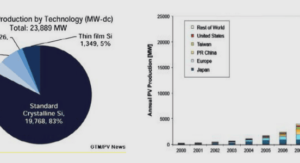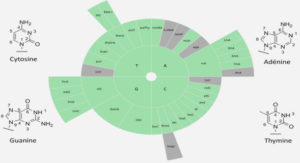Several authors were interested in ways to increase the “capacity to deform” of different materials. The objectives behind these studies were the emergence of a new generation of parts weighed lighter but with higher strength and more and more complex shapes. Globally, after the analysis of several papers on the domain, two elements can be brought out. First, most of the techniques are interested in light weight alloys generally represented by Aluminum (Al) alloys, Magnesium (Mg) alloys or Advanced High Strength Steels (AHSS) (Choi, Koc andNi, 2008) even if the techniques were mostly tested on Al alloys. All the techniques presented imply elevated temperatures, either at the same time as the forming or between forming steps. They can be separate into two groups depending on the moment of the heat treatment(s).
Hot or warm forming processes
In order to get the maximum from light weight alloys, which are associated with a limited formability, the use of elevated temperatures has been considered as a potential solution (Neugebauer et al., 2006). Forming at temperature superior to the room temperature has the benefit not only to significantly improve the ductility of the material, hence the forming capacity, but also by reducing the yield point, to decrease the forming forces and pressures required. Neugebauer et al. (2006) distinguished hot and warm forming in relation to the recrystallization temperature. This temperature is the minimum temperature at which the deformed grain structure of a metal is replaced by a new grain structure when exposed to heat treatments. Thus, a hot forming operation below this temperature is designed as a warm forming. The work piece is heated to the point where the yield point and work hardening are reduced. At or above the indicated temperature, they are called hot forming processes and recrystallization takes place. In addition to the level of temperature reached, another important issue is the way the heat is given to the part. Neugebauer (2006) suggested three types of temperature management systems. The product can be heated outside the tool and then deformed in the tool which is not heated. This process is costless but it faced an important heat loss during the part transfer. The product can also be pre-warmed outside the tool and formed in a heated tool. The heat transfer loss is then minimized but heating the tool could be expensive and a challenge. Finally, the product can be heated and formed in the tool. For this process, an important work has to be done on the design of the forming and heating equipment.
The results obtained with these techniques on the formability enhancement depend on the material. According to Groche et al. (2002), the use of warm forming process, in the case of aluminum alloys, results in a lower yield point and a higher expansion. For magnesium and titanium, their hexagonal lattice structure leads to a limited number of sliding planes for forming at room temperature (Kleiner, Geiger andKlaus, 2003). In the case of magnesium, the elevated temperatures contribute to enhance forming capabilities by improving the ductility and also reducing the forming pressures required. For titanium alloys, at forming temperatures below 500°C there is no significant improvement in the forming behavior (Sibum, 2003). Neugebauer (2006) identified that the challenge in forming Advanced High Strength Steels is to keep their improved characteristics, specially strength, in the final part. That is coming with limitations in terms of forming capability. In fact, their high strength requires higher processing forces and adapted forming tools. In addition, their high yield strength leads to greater dimensional deviations due to spring back which have to be anticipated when designing forming dies. Consequently, he concluded that warm forming conducted below recrystallization temperature leads to an improvement in forming characteristics without any structural changes in the case of these alloys. On the contrary, hot forming is more difficult to conduct because of high temperatures to be reached and the related limitations of the facilities.
Incremental forming processes
Incremental forming process is a technique where a part is formed into the final work piece by a series of small increments of deformation. The multistep forming process stemmed from the incremental technique as a process that can improve material formability through the use of recovery heat treatments applied between increments of deformation (Golovashchenko andKrause, 2005). These authors have used interrupted tensile tests, then plane strain tests, to simulate the incremental forming process on aluminum 6xxx alloys. Their objective was to identify the right heat treatment sequence that is able to restore the formability of the metal without penalizing alloy’s performances. In conclusion, Golovashchenko and Krause (2005) attested that a particular heat treatment (250˚C, 30s) of prestrained (10%) aluminum alloy AA6111 provided sufficient recovery to increase elongation from 25% to 45% with one intermediate heat treatment. Even if the heat treatment performed in this case is very short and can hardly be performed in the case of the objective aerospace alloys, it is observed that an intermediate heat treatment can have an impact on the elongation increase. They also highlighted the key factors to attempt formability improvement of the alloy, i.e. the heat treatment temperature, time and the amount of deformation between heat treatments. The incremental strain should reflect an adequate amount of deformation corresponding to the first forming operation of a part. In the case of hydroforming, it could be equivalent to the bending before hydroforming step for instance. Also, this deformation should be enough to generate significant microstructural changes but not enough to cause localized necking. The heat treatment specifications should be chosen in consideration of the alloys properties and responses to annealing. In the case of these aluminum alloys, the heat treatment had removed the majority of the deformation done during the increments without incurring significant aging. The authors had tested more complex states of stress through dome testing and the results obtained were in good agreement with their tensile tests results. This shows that the results obtained with very simple tests as tensile tests could be extended to complex states of stress observed in most forming operations for some alloys.
INTRODUCTION |





